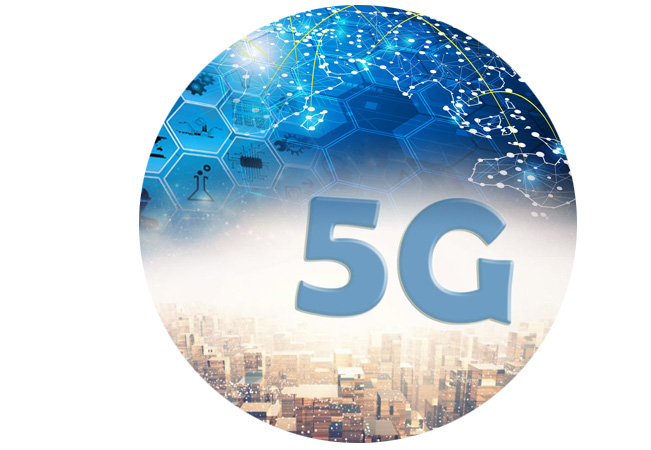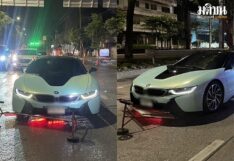| ผู้เขียน | Dr. Thirapiroon Thongkamwitoon |
|---|
In the year 2018 it would be one of the most exciting time of telecommunication sector worldwide. It is the time that 5G (Fifth-Generation Mobile Communications) technology will be due for a practical trial and relevant standards shall be formed. Once fully developed and deployed, the technology is expected to not only create great impact on the telecom sector but also contribute to digital transformation across different industries including agriculture, manufacturing, finance, healthcare, tourism, and logistics.
In Thailand, for many, 5G is a key driver for innovation and new types services that lead the country to Thailand 4.0.
While the deployment of 4G network has been a success story of the telecommunication in Thailand, the 4G is often perceived as a faster and more reliable successor of 3G technology. The accessibility to 3G and 4G networks has led to unprecedented changes to the Thai society and recent years saw more and more people, at any age and any background, can connect to the internet. The social media and personal messengers such as LINE and WhatsApp have become new standard means of communication of the age. The mobile broadband has also accelerated the use of video streaming such that it provides new channels between content creators and consumers. More and more consumers then switched from traditional media like TV programs and newspapers to online platforms and Live streaming on social media. The process finally sparked shifts and a disruption in media and advertisement industry in Thailand.
The 5G technology will undoubtedly provide a lot faster speed than that of current 4G system. It is claimed that minimum speed for download using 5G system is 1 Gigabit per second, or approximately 20 times of 4G speed. The number could reach up to 1,000 times in the case of 5G maximum data rate. With such a high speed, many technology houses showed that a whole story of movie, traditionally stored on CD or DVD ROM, can be downloaded within one second. This extremely fast mobile broadband system therefore can better provide live-streaming video and other new media services through social media.
At any case, the 5G system shall not be falsely recognized as only a faster evolution of the existing 4G system. The real potential, in fact, is a new way of connectivity with low latency, ultra high reliability, and features for Machine-to-Machine (M2M) communications and Internet of Things (IoT).
The latency required for 5G is less than 1 millisecond – a lot less than 50 millisecond limit the 4G systems can do. If achieved, this latency level would enable to make a real-time connection that is boon for applications like autonomous cars, remote surgery, distant virtual reality, and drone/robot control. These kinds of application needs immediate responsive communications and few-milliseconds delay can make differences between success and failure. One can imagine how fast an autonomous car needs to react to avoid a crash at a speed of 100 km per hour. This required condition is not well met by most pervasive communication technologies in the market.
Nevertheless the feature of 5G that tends to create great impact is an ability to handle up to one million connections per square kilometer. The 5G is thus an enabling technologies for M2M communications, IoT, and a variety of automation. Unlike 4G that was created to deliver high speed broadband connection that generally required continuous power consumption, the 5G is so flexible that it can provide extremely high speed connection, and also a connection with a lot lower power consumption for the devices that do not require frequent data transmission. This mode of operation supports a connection of IoT devices and sensors that can live on a long battery life up to 10 years. It therefore makes possible for a large scale deployment of field sensors in farms and forest that the change of battery might be difficult and time consuming.
One of the promising IoT applications using 5G network includes intelligent transport system (ITS). The connection of vehicles to the 5G system allows vehicles to exchange driving conditions, locations, and speed such that many accidents can be avoided. Once the cars are connected to the internet, a central processing system the can project traffic congestion areas and it offers a better solution to city management.
The use of wireless sensor network through a 5G system will also contribute to a large variety of applications, for example, precision farming where farming conditions such as humidity, fertilizer level and lighting in many locations can be collected simultaneously. The information would help to better manage farming and crop harvest.
The 5G network can also support the connection of smart meters which can measure the amount of utility consumption in different areas so the collective data can be used for utility supply management and planning as well as a task in real-time pricing.
Many analysts forecast that 5G service will change the landscape of telecommunication industry. The communication which has been traditionally provided to public consumers will now be for private enterprises. The use case of such business model is an enterprise network in industrial estates which connects devices, machines, and field robots together and forms autonomous framework production systems. The network can also receive information from retail databases therefore the production can be adjustable with the demand.
All of the story here would help to create an ecosystem for traditional economic sectors to leapfrog through the digital transformation.
There will be some key factors that determine the success of 5G adoption in Thailand.
First, it is how telecom service providers react when the technology is ready to be adopted. A new approach for business modeling might be considered since the data service now can be delivered to a user with a dozen of devices, or even thousands of devices in one’s account. We might see more and more services in for of whole-sale data package in the existing telecom market predominantly shared by retail data service.
Second, it is how policy makers and regulatory organization response to the changes of telecommunication market and the new forms of services mentioned above. The high speed network of 5G will also require additional spectrum allocation especially for the frequency bands above 24 GHz.
Third, and possibly the most important factor, it is how consumers, public sector, entrepreneurs, and companies in different industries can harness the potential of 5G services. The way to build services on 5G might be more complicated than ever before but well-informed stakeholders would determine how well and fast Thailand can adopt this powerful technology to create innovation, services, and strengthen self competitive advantages. And the integration of new services would be a building block that drives Thailand through the age of digital economy.
Dr. Thirapiroon Thongkamwitoon
Senior Engineering Officer
Spectrum Management Bureau, Office of NBTC










